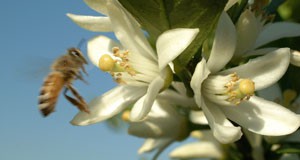Feral colonies of honey bees nesting near humans or domestic animals can pose a stinging threat and may be considered a nuisance and possibly a threat to animal or public health, and therefore bees often need to be removed or eradicated when they are found nesting near homes or other property. This 14-page guide written by Mary Bammer, Jamie Ellis, Eric Baxter, Krista Butler, John Coldwell, B. Keith Councell, Kevin Easton, Brendhan Horne, Brandi Stanford, and Amy T. Vu and published by the UF/IFAS Entomology and Nematology Department details best management practices for live bee removals and serves as a reference for beekeepers who choose to perform live bee removal services in Florida.
https://edis.ifas.ufl.edu/in1297
Tag: Jamie Ellis
How to quantify Varroa destructor in honey bee (Apis mellifera L.) colonies
The Varroa destructor mite, a devastating pest of western honey bees, can threaten a honey bee colony’s survival if it is left uncontrolled. This 8-page fact sheet written by Cameron Jack, Nathan Sperry, Ashley N. Mortensen, and Jamie Ellis and published by the UF/IFAS Entomology and Nematology Department explains how to monitor honey bee colonies to ensure that infestations of these destructive pests do not grow to dangerous levels.
https://edis.ifas.ufl.edu/in1257
Identification and Treatment of European Foulbrood in Honey Bee Colonies
European foulbrood is a bacterial disease that affects Western honey bee larvae. It is a concern to beekeepers everywhere, though it is less serious than American foulbrood because it does not form spores, which means that it can be treated. This 7-page fact sheet written by Catherine M. Mueller, Cameron J. Jack, Ashley N. Mortensen, and Jamie Ellis and published by the UF/IFAS Entomology and Nematology Department describes the disease and explains how to identify it to help beekeepers manage their colonies effectively and prevent the spread of both American and European foulbrood.
https://edis.ifas.ufl.edu/in1272
Chalkbrood Recommendations
A pathogenic fungus called chalkbrood can turn infected larval honey bees into “mummies,” killing them and reducing their colony’s population and productivity. Florida’s subtropical climate may contribute to a greater incidence of the disease, which is common throughout the state. This 2-page fact sheet describing chalkbrood and listing some management strategies to control it was written by Malcolm T. Sanford, Cameron J. Jack, and Jamie Ellis, and published by the UF Department of Entomology and Nematology, December 2016.
http://edis.ifas.ufl.edu/aa138
How to Quantify Nosema Spores Infection Rate in a Honey Bee Colony
Nosema are single-celled fungal parasites that infect various animal hosts. One species, Nosema ceranae, has become the dominant microsporidian infection in western honey bee colonies. When honey bees ingest Nosema spores, many eventually starve to death because the spores replicate in the stomach and hijack the bee’s nutrition. The risk of Nosema infection can be particularly unsettling to beekeepers because colonies often do not show signs of infection until the colony is severely diminished.
This 5-page fact sheet written by Ashley N. Mortensen, Cameron J. Jack, Meghan McConnell, Liana Teigen, and Jamie Ellis and published by the Department of Entomology and Nematology explains how to diagnose and quantify Nosema infection in a honey bee colony.
http://edis.ifas.ufl.edu/in1123




